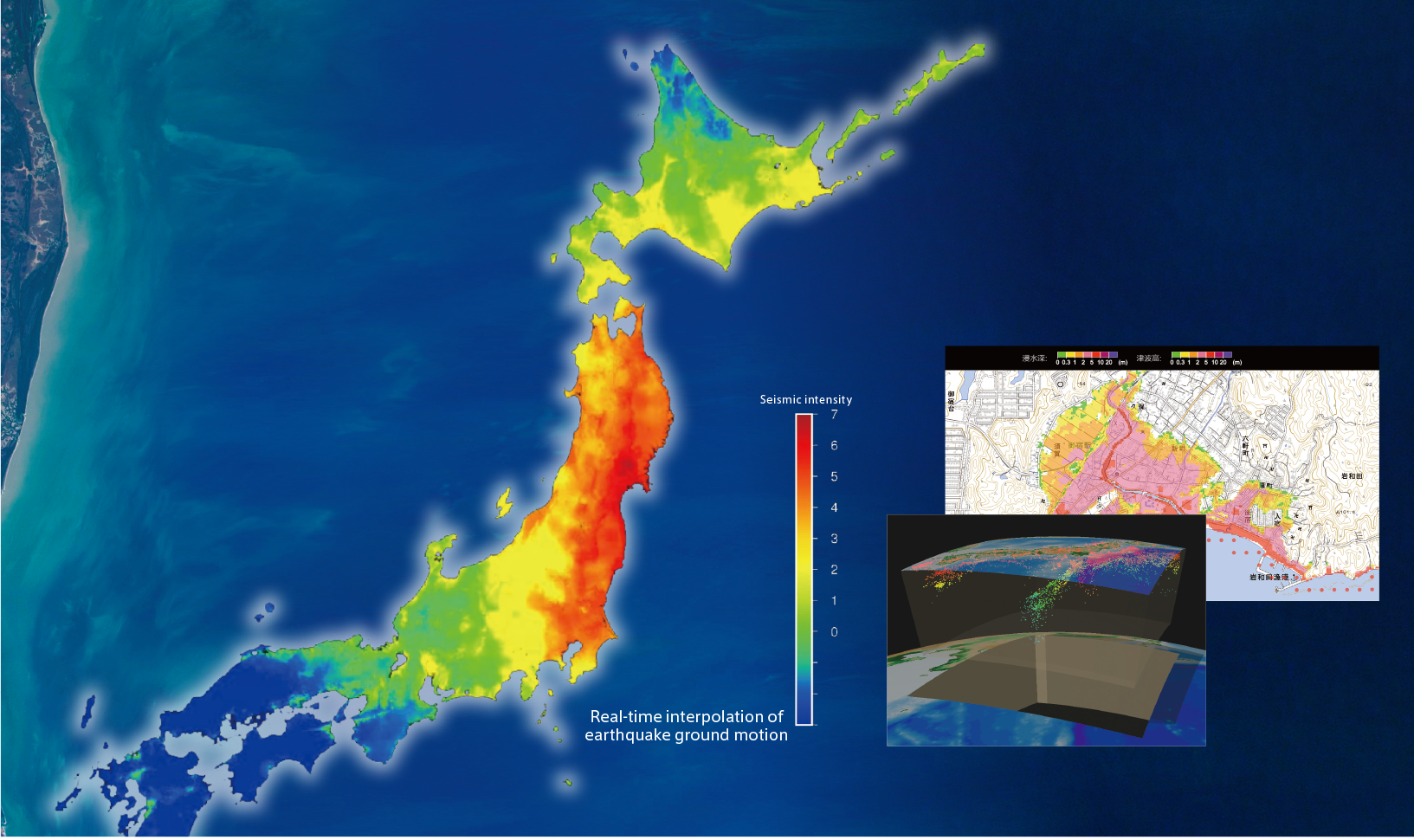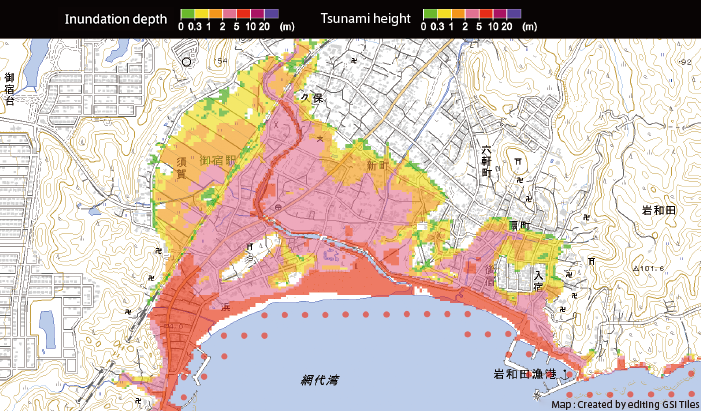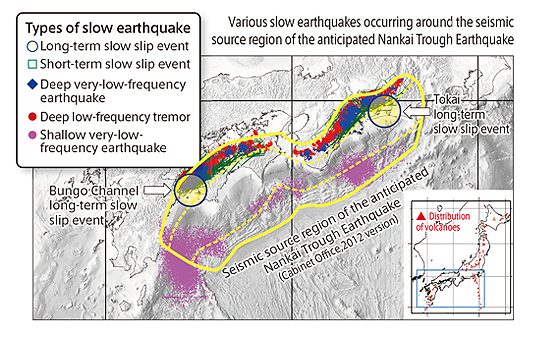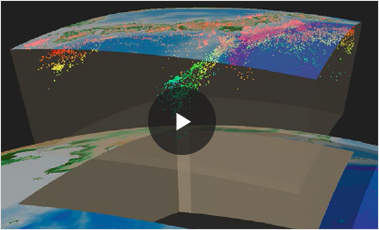Advanced earthquake and tsunami forecasting technologies project
Mitigating Earthquake and Tsunami Damage through Cutting-edge Research Making Full Use of Observation Data

Following the Great East Japan Earthquake of March 2011, various issues surfaced regarding disaster risk reduction for earthquakes and tsunamis. To sufficiently prepare for mega earthquakes and subsequently triggered tsunamis, it is vital to quickly obtain the precise observation data and make the maximum use of it. Making full use of data obtained from “MOWLAS” and simulations, we aim to advance the real-time prediction of ground motion/tsunamis and the assessments of the long-term of earthquake occurrence, in order to contribute to mitigating earthquake and tsunami disasters.
Real-time prediction of earthquake ground motion
Shaking of an earthquake spreads as time passes throughout the vicinity from the time of occurrence. Using this character of shaking, we are promoting research and development that directly predicts the distribution of subsequent “shaking”. For example, using “Real-time interpolation of earthquake ground motion”, it is possible to obtain the whole-area distribution of complicated seismic motion from observed data that is spatially uneven. We are also developing prediction technologies regarding seismic motion that is difficult to respond to, such as long-period ground motion that intensely shakes high-rise buildings for extended periods of time and deep-focus earthquakes that occur more than 200 km underground.
Forecasting all aspects of tsunamis
Using real-time observation data of MOWLAS, particularly from S-net and DONET that observe earthquakes and tsunamis in the ocean area, we are promoting research and development for forecasting all aspects of tsunamis from the first tsunami arrival and the following tsunamis that could be larger to the end of the tsunami threat. Instead of the existing tsunami warning which merely describes the heights and arrival times of the tsunamis along the coast, we aim to be able to make more specific forecasts that can show “whether the tsunami will reach the current location on land” and “around what time the tsunami will calm down”.

Assessments of the long-term potential for large earthquakes
Through observed data analyses and large-scale simulations, we aim to advance technologies for the long-term potential for large earthquake occurrence. We are also monitoring slow earthquakes that are related to the megathrust earthquakes along the Nankai Trough, and investigating their mechanisms.
The figure shows distribution of seismic sources of earthquakes with magnitude 2.5 or above that occurred in Japan in 2015, observed by Hi-net. We locate 500~1000 micro-earthquakes typically in a day, and apply the results to evaluate occurrence of large earthquakes in the future.
*The colors of each dot represent depth. As depth increases, the colors change from red to yellow, green, and blue.
TOPICSDiscovery and monitoring of various types of slow earthquakes

Based on the observation of NIED Hi-net and other MOWLAS networks, weak ground shaking that was different from regular earthquake was discovered around the Nankai Trough megathrust earthquake source region. This phenomenon, called a slow earthquake, is caused by fault slip slower than that of regular earthquakes. According to the detailed analyses, several types of slow earthquakes with various characteristic duration time were occurring periodically. Simulation researches have highlighted the possibility that slow earthquakes have some impacts on the occurrence of the megathrust earthquakes. We conduct the researches to improve monitoring technologies and to understand the earthquakes’ mechanisms.

